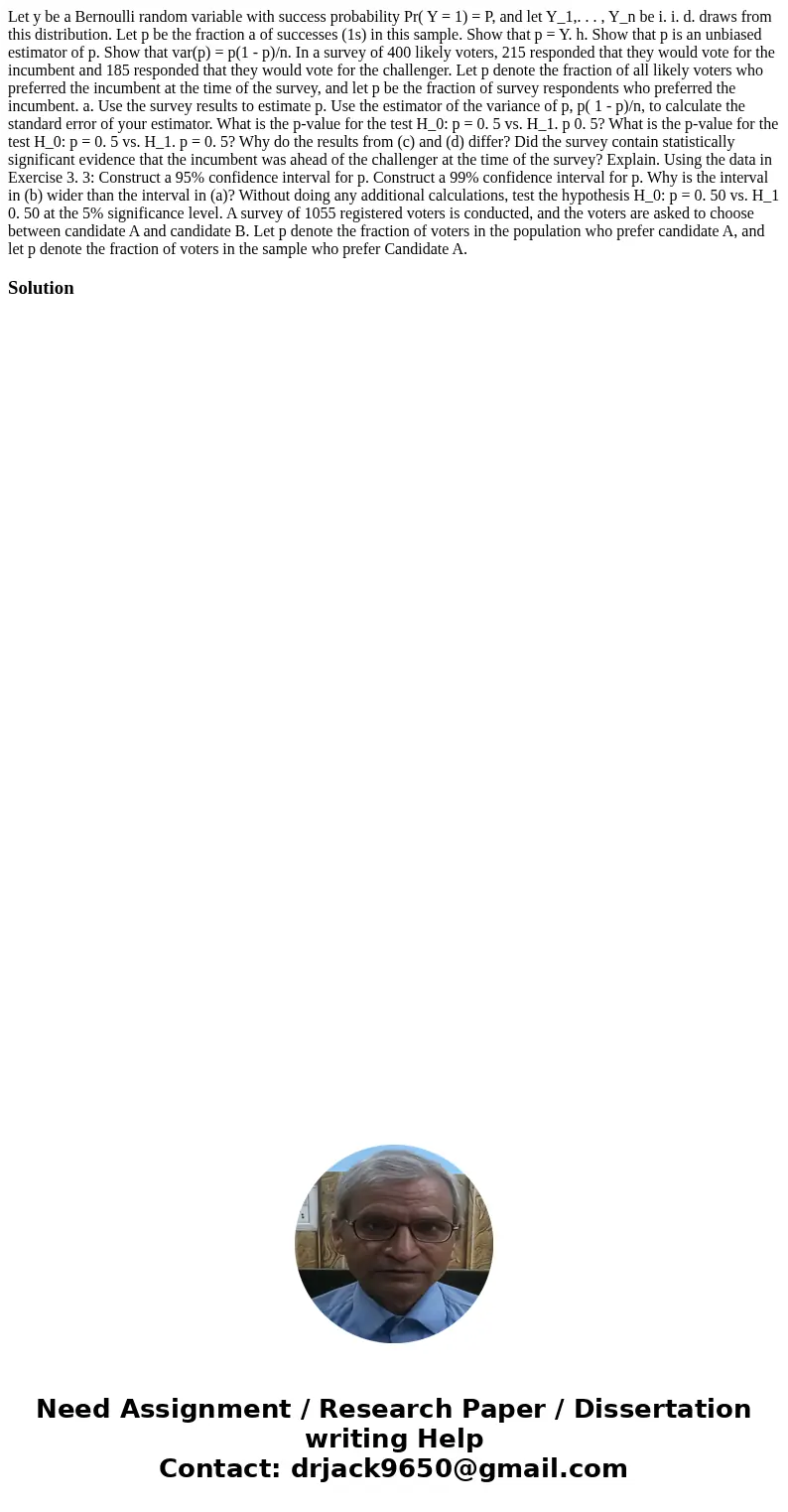Let y be a Bernoulli random variable with success probabilit
Let y be a Bernoulli random variable with success probability Pr( Y = 1) = P, and let Y_1,. . . , Y_n be i. i. d. draws from this distribution. Let p be the fraction a of successes (1s) in this sample. Show that p = Y. h. Show that p is an unbiased estimator of p. Show that var(p) = p(1 - p)/n. In a survey of 400 likely voters, 215 responded that they would vote for the incumbent and 185 responded that they would vote for the challenger. Let p denote the fraction of all likely voters who preferred the incumbent at the time of the survey, and let p be the fraction of survey respondents who preferred the incumbent. a. Use the survey results to estimate p. Use the estimator of the variance of p, p( 1 - p)/n, to calculate the standard error of your estimator. What is the p-value for the test H_0: p = 0. 5 vs. H_1. p 0. 5? What is the p-value for the test H_0: p = 0. 5 vs. H_1. p = 0. 5? Why do the results from (c) and (d) differ? Did the survey contain statistically significant evidence that the incumbent was ahead of the challenger at the time of the survey? Explain. Using the data in Exercise 3. 3: Construct a 95% confidence interval for p. Construct a 99% confidence interval for p. Why is the interval in (b) wider than the interval in (a)? Without doing any additional calculations, test the hypothesis H_0: p = 0. 50 vs. H_1 0. 50 at the 5% significance level. A survey of 1055 registered voters is conducted, and the voters are asked to choose between candidate A and candidate B. Let p denote the fraction of voters in the population who prefer candidate A, and let p denote the fraction of voters in the sample who prefer Candidate A. 
Solution

 Homework Sourse
Homework Sourse